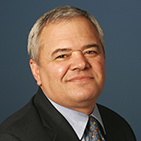The US economy shifted into a higher gear in 2014 as growth over the last three quarters averaged 4.5%. With consumer, business and even government spending set to rise, the outlook for 2015 is even brighter—and that should be enough to convince the Federal Reserve to start lifting interest rates.
by Joseph Carson, AllianceBernstein
Last year was a good one for US consumers and businesses alike. The pace of hiring quickened, boosting both consumer spending and business investment. And it all came against a backdrop of fairly benign inflation. In fact, overall growth might have been even more robust if not for the weather-related 2.1% annualized contraction in the chilly first quarter of the year. Even so, growth over the final nine months of the year marked the best string of quarterly performances in more than a decade, putting real calendar year GDP growth at 2.5%— below our initial forecast of 3.2%.
In 2015, we expect real GDP growth of 3.8% (Display). Stronger consumer markets will contribute heartily, thanks to improved income and job creation. So will the unexpected stimulus of lower oil prices. Here’s a closer look at what we expect.
The Consumer: Spending on durable goods—particularly motor vehicles—helped drive a 2.5% jump in real consumer spending in 2014. In 2015, we’re projecting a 3.2% increase, which would be the biggest since 2006. There are several reasons to be optimistic. First, the labor market has vastly improved. The economy added 2.5 million jobs in 2014—the biggest annual gain in 15 years—and the jobless rate continued its downward march to 5.6%, a percentage point below where it began the year.
Second, households have slashed their debt burdens and liquidity, and wealth positions are the best they’ve been in decades. Third, higher incomes and better job prospects have boosted consumer confidence. And in case all of that isn’t enough, a sharp decline in energy prices has delivered an unexpected windfall for consumers.
Business Investment Spending: In 2015, we expect spending on equipment and software to rise about 7%, compared to an estimated 6% in 2014. But there are two wild cards. First, energy sector firms will almost certainly slash capital spending in response to the oil price slide. It’s hard, though, to gauge just how severe those cuts will be. Second, the inevitable Congressional debate on corporate tax reform, while positive over the longer run, could dampen spending in the short term until the new tax rules are made clear.
Construction Markets: Residential and nonresidential construction markets should post solid gains in 2015. We expect gains of somewhere between 8% and 9%, which would beat gains seen in 2014. One indicator of future construction activity that we rely on is the F.W. Dodge newly awarded contract series. This index surged in 2014, hitting an eight-year high in November. This index usually leads actual construction spending by one or two quarters, so there appears to be plenty of construction projects on tap for 2015.
External Trade: US energy exports began to heat up in 2014, with real petroleum exports likely to top US$100 billion for the first time ever. That’s roughly five times above petroleum exports a decade ago. Capital goods exports were soft last year—especially civilian aircraft, despite Boeing’s record backlog. But this backlog does support our view that exports will hold up in 2015. Nevertheless, the combination of a stronger dollar and weak global growth will likely limit export gains to roughly 2%–3% in 2015.
Government Spending: On balance, government spending remains soft, but a roughly 0.5% gain in 2014 marks the first annual increase since 2008. We expect larger gains—close to 2%—in 2015. State and local spending, such as the 7% nominal spending increase in California’s 2015 budget, will help drive the jump, as will a 10% increase in the federal defense budget.
The swoon in energy prices kept headline inflation in check in 2014; consumer prices rose an estimated 1% for the full year and about 2% when excluding energy.
But as Fed officials noted at their December policy meeting, oil prices are likely to stabilize this year before starting to move higher as the growth outlook improves. And while we think headline inflation will hold at 1% in 2015, we expect core prices, which strip out energy and food costs, to rise 2%–2.5%.
The rise in inflation excluding energy and tighter labor markets should compel the Fed to begin increasing official rates in the second quarter of 2015 and gradually take them to 1% or higher by year-end.
The views expressed herein do not constitute research, investment advice or trade recommendations and do not necessarily represent the views of all AB portfolio-management teams.
Joseph G. Carson is Director of Global Economic Research at AB(NYSE: AB).

Joseph G. Carson
Joseph G. Carson joined AllianceBernstein in 2001. He oversees the Gobal Economic Research group, which provides economic analysis for the firm, and has primary responsibility for economic and interest-rate analysis of the US. Previously, he was chief economist of the Americas for UBS Warburg . Over the years, he has also served as the chief US economist at Deutsche Bank, as chief economist at Chemical Bank and Dean Witter, and as senior economist at Merrill Lynch. Carson began his professional career in 1977 as a staff economist in the US Department of Commerce and represented the department at the Council on Wage and Price Stability during President Carter’s voluntary wage and price guidelines program. Early in his career, he also held a variety of roles at General Motors. Carson was named to the Institutional Investor All-Star Team for Fixed Income while at Deutsche Bank, He received his BA and MA from Youngstown State University and did his PhD coursework at George Washington University. Location: New York
Copyright © AllianceBernstein
















